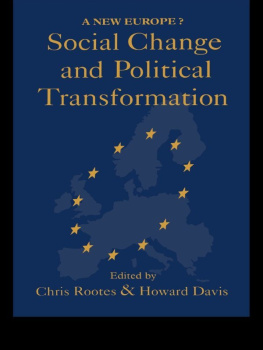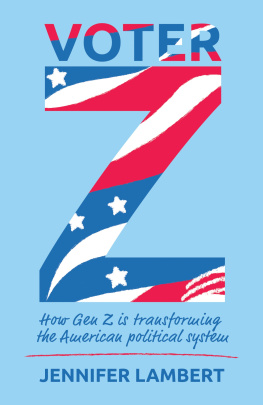AFRICAN ETHNOGRAPHIC STUDIES
OF THE 20TH CENTURY
Volume 41
KIKUYU
KIKUYU
Social and Political Institutions
H. E. LAMBERT
First published in 1956 by Oxford University Press for the International African Institute.
This edition first published in 2018
by Routledge
2 Park Square, Milton Park, Abingdon, Oxon OX14 4RN
and by Routledge
711 Third Avenue, New York, NY 10017
Routledge is an imprint of the Taylor & Francis Group, an informa business
1956 International African Institute
All rights reserved. No part of this book may be reprinted or reproduced or utilised in any form or by any electronic, mechanical, or other means, now known or hereafter invented, including photocopying and recording, or in any information storage or retrieval system, without permission in writing from the publishers.
Trademark notice: Product or corporate names may be trademarks or registered trademarks, and are used only for identification and explanation without intent to infringe.
British Library Cataloguing in Publication Data
A catalogue record for this book is available from the British Library
ISBN: 978-0-8153-8713-8 (Set)
ISBN: 978-0-429-48813-9 (Set) (ebk)
ISBN: 978-1-138-59553-8 (Volume 41) (hbk)
ISBN: 978-0-429-48821-4 (Volume 41) (ebk)
Publishers Note
The publisher has gone to great lengths to ensure the quality of this reprint but points out that some imperfections in the original copies may be apparent.
Disclaimer
The publisher has made every effort to trace copyright holders and would welcome correspondence from those they have been unable to trace.
KIKUYU
SOCIAL AND POLITICAL INSTITUTIONS
BY
H. E. LAMBERT
Published for the
INTERNATIONAL AFRICAN INSTITUTE
by the
OXFORD UNIVERSITY PRESS
LONDON NEW YORK TORONTO
1956
CONTENTS
- 3. THE REGIMENTAL SYSTEM
(KIKUYU, EMBU, MERU)
Oxford University Press, Amen House, London E.C.4
GLASGOW NEW YORK TORONTO MELBOURNE WELLINGTON
BOMBAY CALCUTTA MADRAS KARACHI CAPE TOWN IBADAN
Geoffrey Cumberlege, Publisher to the University
Printed in Great Britain by
The Camelot Press Ltd., London and Southampton
T HIS portion of a much longer unpublished work on the social and political institutions of the tribes of the Kikuyu Land Unit, is being issued now in view of the current interest in Kikuyu affairs. I am much indebted to Dr. L. S. B. Leakey for allowing me to read his remarkable study of the Southern Kikuyu, unfortunately not yet published; to Mr. W. H. Laughton for the loan of his pioneer work, An Introductory Study of the Meru People, also unpublished; and to the late Reverend Philip MInoto for a copy of his unpublished Asili ya Wameru na Tabia Zao. My gratitude is due to very many Africans for their willing and patient help; and in particular to Messrs. MMuras Kairangi of Meru, Kofia Migwi of Fort Hall, and Munyambo Kirata of Kiambu. Finally, I wish to express my thanks to Professor I. Schapera for his sustained encouragement, and to Mrs. E. M. Chilver and Dr. L. P. Mair for their generous help in the preparation of the manuscript.
Most of the material for this study was collected during my residence in Kenya as an Administrative Officer.
H.E.L.
T HE area of the Kikuyu Land Unit is defined by the Native Lands Trust Ordinance of 1938, and comprises the five administrative districts of Fort Hall, Nyeri, Kiambu, Meru and Embu. Its total African population in 1948 was 1,259,830. They fall into the four main tribal groups, speaking closely related languages, of Kikuyu, Meru, Chuka, and Embu. Each of these is further sub-divided into named territorial sections, the inhabitants of which are politically autonomous; these will be referred to as sub-tribes. The KIKUYU proper fall into three sub-tribes, Metume in Fort Hall, Karura in Kiambu and Gaki in Nyeri; closely related sub-tribes are the Gichugu and Ndia of Embu District. The EMBU themselves are divided into Embu and Mbere. The Meru and Chuka are both included in Meru District. The MERU proper are divided into Imenti, Tigania and Igembe. The Igoji and Mwimbi sub-tribes are closely related to the Meru. Of the other sub-tribes of this district the Miutini and Muthambi have affinities with both Meru and Chuka, as do the Tharaka, some of whom live in the Kamba Land Unit.
These peoples have in common certain general principles of social structure. Descent is patrilineal and marriage in general patrilocal. Political organization rests on the grouping of the male population according to age. Age-sets are formed at the time of their initiation into manhood; successive sets are combined into larger units to which I give the name of regiment, and these again are grouped in generations. In Meru the women too are grouped in age-sets. This grouping is anticipated by the naming of groups of age-mates while they are still too young for initiation. Individuals, male or female, can be described at every period of life by terms denoting age and the attainment of the status held to be appropriate to any given age.
Territorial organization is based on the joint rights of an extended family (Kikuyu mbari) in an area of land (Kikuyu githaka) over which its homesteads are scattered; they are not grouped in compact villages. A githaka area with its inhabitants, including both right-holders and attached dependants, is called in Kikuyu itura, and is the smallest political unit. I translate this word village group. A group of these was known in Kikuyu as mwaki, which may be translated neighbourhood, and for certain purposes, including the formation of age-regiments, a number of these combined in a wider unit for which there is no Kikuyu term.
For particulars of the populations of the tribal groups and their distribution see Middleton, J., The Kikuyu and Kamba of Kenya (Ethnographic Survey of Africa, East Central Africa, Part V) International African Institute, 1953.
I N all tribes of the Unit the social status of an individual, as determined by age, sex, the right to procreate, and parenthood, is denoted by a generic term applied to him and to all others of a like standing in society. Certain of the terms used do not distinguish sex for very young or very old people, that is, well before sex has begun to be biologically functional in character and well after it can be reasonably supposed to have ceased to be so.
The following are the terms most commonly used. An infant, a recently born baby, is called gakenge (pl. tukenge) in Kikuyu, and gakenke (pl. tukenke) in the Meru group and Chuka. The word rukenge, rukenke, is similarly used. Both terms are normally applied to a child up to the time it begins to toddle, and may be used of it as long as it is breast-fed.
In the next stage, from the time it starts to walk up to the time it is considered old enough to help in herding goats or in its mothers household chores, it is called













